Veneers in Pune
Search and Compare the Best Clinics and Doctors at the Lowest Prices for Veneers in Pune

Find the best clinics for Veneers in Pune
With Medijump you can browse 1 facilities offering Veneers procedures in Pune. The cheapest price available is $48 in Mumbai
Veneers in India
Price: $ 48
Veneers in Mumbai
Price: $ 48
Veneers in Coimbatore
Price: $ 69
Vietnam offers the best prices Worldwide
Price: $ 1
Gupta Dental & Eye Care, located in Thite Nagar, Pune, India offers patients Veneers procedures among its total of 2 available procedures, across 1 different specialties. Currently, there's no pricing information for Veneers procedures at Gupta Dental & Eye Care, as all prices are available on request only, whilst the national average price is approximately $110. There are many specialists available at the Dental, with 4 in total, and they are not accredited by any recognized accreditations institutes
Compare Before & After Photos of _procedure_photos.phpVeneers
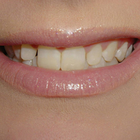

Front view
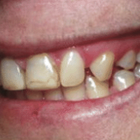
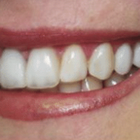
Half-side view
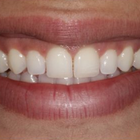
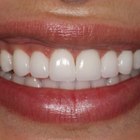
Front view
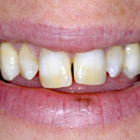
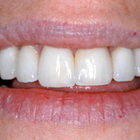
Front view
WHY US?
At Medijump, we're making medical easy. You can search, compare, discuss, and book your medical all in one place. We open the door to the best medical providers worldwide, saving you time and energy along the way, and it's all for FREE, no hidden fees, and no price markups guaranteed. So what are you waiting for?

Free

Best Price

Widest Selection

Risk-Free
What you need to know about Veneers in Pune

Dental veneers are thin covers that are attached to the surface of teeth to enhance their appearance. The non-invasive dentral procedure is previously popular among those with damaged or discolored teeth. Nowadays, however, the procedure is seen as the ideal method of achieving the ‘perfect smile.'
Veneers can be used to hide uneven, misaligned or simply imperfect teeth. The veneers are cemented over the existing teeth and fixed into place – there are two main types of veneer; Porcelain and Composite. Porcelain veneers are more expensive and appear more natural, being made in a laboratory so require multiple visits. There is often the need to alter the existing teeth, removing some of the mass. Composite veneers are made of the same materials used for cavity fillings. They can usually be made quickly, and are sculpted directly on the teeth instead of in a laboratory. Thus allowing the procedure to be done in a day.
What does a Veneers Procedure Involve?
Veneers are used primarily for aesthetics. This type of treatment procedure is perfect for people who have gaps in their teeth, stains, as well as people who may have chipped a tooth. Veneers are custom-made shells designed to fit the shape of your teeth and to be attached to your front teeth to improve the size, shape, color, and length.
Two main types of veneers are:
- Composite Veneer - this type can be created by your dentist on the same day and directly applied to your teeth. You will only need a single appointment to complete the procedure.
- Porcelain Veneer - this type is manufactured in a laboratory. Opting for a porcelain veneer will require you to have two appointments. First, is to prepare your teeth (enamel removal) and mold a model of your teeth to be created in the lab. The second is to finally cement your veneers onto your teeth.
The most commonly used type of Veneer is the Porcelain Veneer as it appears more natural and can resist stains better than composite veneers. Besides the two main types of veneers, some dentists may also offer no-prep veneers. These may include specific brands of procelain veneers like Vivaneers and Lumineers. They are less invasive to apply since the layers of tooth under the enamel aren't removed.
In terms of anesthetics, local anesthesia is not usually required while undergoing the whole procedure. However, depending on how you handle pain and discomfort, you may request to receive local anesthesia or sedation.
Aside from giving you a pleasing smile, veneers are resistant to staining and offer the best fix to broken or damaged teeth.
How Long Should I Stay in Pune for a Veneers Procedure?
This type of procedure is an outpatient treatment, meaning you may be able to go home after undergoing the procedure. However, you will be required to do a follow-up check-up with your dentist to assess the placement of your veneers and in most cases, the procedure has to be carried out over 2 separate occasions, just a day or two apart. Since this is a non-invasive treatment, stitches are not required, but you will be required to stay in Pune for at least a few days.
What's the Recovery Time for Veneers Procedures in Pune?
There is actually no recovery time after the placement of your veneers. You can also return back to your daily routines including exercise immediately after your trip. As for the enamel removal, you may experience some mild discomfort for about a week. It is best that you avoid very hot or cold foods, including hard, chewy or crunchy food. When your sensitivity wears off, you can return to your normal dietary habits.
What sort of Aftercare is Required for Veneers Procedures in Pune?
Once your dental veneers have been placed and you have completed the whole procedure, you should commit yourself to good oral hygiene, regular visits to your dentist and a good healthy lifestyle. Dental Veneers can last beyond 10 years now, however, just like your natural teeth, veneers are also still susceptible to damage. This is why aftercare is very important to help with the longevity of your new teeth.
What's the Success Rate of Veneers Procedures in Pune?
Over the past years, many studies have reported that over 91% of people who have had dental veneers experienced highly positive results. However, potential risks and side effects after undergoing this procedure are a possibility. Just like any other dental restoration, dental veneers can have some side-effects, for example:
- Tooth sensitivity - since this procedure will require the removal of some enamel, your teeth will become slightly sensitive, following the placement of your veneers.
- Response from gum tissues - your gum tissue might take some time to adjust to your newly placed veneers. Expect to have some minor inflammation and/or discomfort in your gums.
- Risk of trauma - once your teeth’s enamel is removed, it will become more sensitive, thus it will be even possible for the pulp within your teeth to die.
- Possible Issues with placement - it's possible for your teeth to have issues with decay or chipping along the outer portion of your veneers. Gum irritation may also be possible. Other problems may include rough-edged veneers and overhanging veneers.
- Overall Discomfort - experiencing some discomfort after the procedure is to be expected. If you are particularly sensitive, it is advisable that you take an over the counter medication to help you relax and treat your pain.
Are there Alternatives to Veneers Procedures in Pune?
You also have to be aware that this type of treatment option is not for everyone. If you are not a good candidate to undergo the procedure, note that there are still possible alternatives that will be suited for you. These alternatives may include:
Orthodontics - if you have severely crooked teeth or malocclusion, dental veneers are not for you. You may want to consider a more comprehensive orthodontic procedure to treat your case.
Dental crowns - these are quite similar to dental veneers. These are also custom-made to match the shape of your teeth. However, unlike veneers, a crown extends all the way around your tooth, meaning your dentist will remove a large portion of your dental structure. These crowns are perfect for patients who have considerable damage that affects the strength and structure of their teeth.
Bonding - often called composite veneers. This is typically for patients with an insufficient amount of tooth enamel.
Whilst the information presented here has been accurately sourced and verified by a medical professional for its accuracy, it is still advised to consult with your doctor before pursuing a medical treatment at one of the listed medical providers
No Time?
Tell us what you're looking for and we'll reachout to the top clinics all at once
Enquire Now

Popular Procedures in Pune
Prices Start From $1

Prices Start From $1

Prices Start From $48

Prices Start From $1

Prices Start From $1

Prices Start From $1

Prices Start From $11

Prices Start From $45

Recommended Medical Centers in Pune for Veneers

- Interpreter services
- Translation service
- Religious facilities
- Medical records transfer
- Medical travel insurance
- Health insurance coordination
- TV in the room
- Safe in the room
- Phone in the room
- Private rooms for patients available

- Interpreter services
- Translation service
- Religious facilities
- Medical records transfer
- Medical travel insurance
- Health insurance coordination
- TV in the room
- Safe in the room
- Phone in the room
- Private rooms for patients available

- Interpreter services
- Translation service
- Religious facilities
- Medical records transfer
- Medical travel insurance
- Health insurance coordination
- TV in the room
- Safe in the room
- Phone in the room
- Private rooms for patients available

- Interpreter services
- Translation service
- Religious facilities
- Medical records transfer
- Medical travel insurance
- Health insurance coordination
- TV in the room
- Safe in the room
- Phone in the room
- Private rooms for patients available

- Interpreter services
- Translation service
- Religious facilities
- Medical records transfer
- Medical travel insurance
- Health insurance coordination
- TV in the room
- Safe in the room
- Phone in the room
- Private rooms for patients available

- Interpreter services
- Translation service
- Religious facilities
- Medical records transfer
- Medical travel insurance
- Health insurance coordination
- TV in the room
- Safe in the room
- Phone in the room
- Private rooms for patients available

- Interpreter services
- Translation service
- Religious facilities
- Medical records transfer
- Medical travel insurance
- Health insurance coordination
- TV in the room
- Safe in the room
- Phone in the room
- Private rooms for patients available

- Interpreter services
- Translation service
- Religious facilities
- Medical records transfer
- Medical travel insurance
- Health insurance coordination
- TV in the room
- Safe in the room
- Phone in the room
- Private rooms for patients available

- Interpreter services
- Translation service
- Religious facilities
- Medical records transfer
- Medical travel insurance
- Health insurance coordination
- TV in the room
- Safe in the room
- Phone in the room
- Private rooms for patients available

- Interpreter services
- Translation service
- Religious facilities
- Medical records transfer
- Medical travel insurance
- Health insurance coordination
- TV in the room
- Safe in the room
- Phone in the room
- Private rooms for patients available
Veneers in and around Pune
About Pune
Pune is a city in the Indian state of Maharashtra. With an estimated population of 3.13 million, it is the ninth most populous city in the country. Like many other cities in India, this city is a perfect blend of ancient and modern. It’s a thriving metropolis that still retains a few of its old buildings and residential areas. The city is famous for the Osho International Meditation Resort, an ashram founded by the late guru Bhagwan Shree Rajneesh. There is a lot to see and do in this city that cannot be packed into a short weekend trip. Recently, many tourists visit the city for its medical treatments.
Pune’s is in sync with India’s fast-growing medical tourism. Domestic and foreign patients prefer the city to get the best healthcare. Medical cost is relatively cheaper here than in any other medical tourism country. The government is expanding this sector rapidly to drive a strong growth rate. With high-quality hospitals, infrastructure, and well-trained medical professionals, the city has a lot of contribution in helping India to be the number one medical destination in the world.
A wide range of medical treatments is available in Pune, from Breast Augmentation, Tummy Tuck, to Otoplasty. Columbia Asia Hospital Pune, Deenanath Mangeshkar Hospital and Research Center, and Apollo Jehangir Hospital are some of the best hospitals with the highest ratings.
Popular Areas in Pune
Pune has a lively nightlife and vibrant atmosphere due to its large student population. It’s sometimes called “Oxford of the East” because there are numerous colleges and institutes here. It is also well known for its hill forts that offer panoramic views, fantastic restaurants, and good museums. The city has a magnificent history of nearly 1600 years.
- Shaniwar Wada is a historical fortification situated at the very heart of Pune. Built in 1732, it was originally a seven-storied capital building of the Peshwas of the Maratha Empire. It’s an amazing place for history buffs. Tourists can enjoy some live shows in the evening.
- Mahadji Shinde Chhatri has an extremely beautiful architecture that reflects the style used in Rajasthan. It is a memorial dedicated to the great soldier, Mahadji Shinde who served as the commander-in-chief of the Maratha army under the Peshwas for twenty years. The memorial consists of a temple dedicated to Lord Shiva.
- Pataleshwar Caves is a religious shrine that dates back to 700 – 800 AD. Located on Jungli Maharaj Road, the shrine has grand statues of Nandi, Sita, Ram, Lakshman, Lakshmi, Ganesh, and a big Shivalingam.
- Parvati Hill is the highest point in Pune. It offers a beautiful panoramic view of the city and is especially breathtaking during sunrise and sunset. The hill is home to four temples.
- Osho International Meditation Resort draws thousands of sannyasins since 1990. It is the perfect place to get some peace of mind. With various meditation techniques, the resort is suitable for those who want to indulge in some luxurious meditation. The resort has a swimming pool, sauna, spa, and guesthouse.
Weather and Climate in Pune
March to June is summer and the temperature can get really high during this season, with the highest temperature ever recorded is 43.3 °C (109.9 °F). The end of May usually experiences dusty winds. Humidity is also very high.
Monsoon or rainy season starts in June and last until October. There are moderate rainfall and the average temperature ranging from 22 °C to 28 °C (72 to 82 °F). July is the wettest month of the year with occasional Hailstorms.
Winter has the most pleasant weather. It starts from December to February. The average daytime temperature is around 26 °C (79 °F) and night temperature can drop to 5 °C to 6 °C (41 to 43 °F). Due to the pollution, the city’s winter temperature has warmed up by 6 degrees.
Getting Around in Pune
Pune International Airport is still the main airport in the city until the completion of the proposed Chattrapati Sambhaji International Airport. This airport has one terminal that serves both domestic and international flights. Major airlines such as Air India and budget airlines such as AirAsia India, GoAir, and IndiGo operate flights from this airport. The international flights connect the city with Abu Dhabi, Dubai, Sharjah, and Frankfurt.
To get to the city center from Pune International Airport, taxis, buses, auto-rickshaws, and car rentals are available. There are four bus lines that reach the city center: 24B, 102, 158 and 158A. A bus ride usually takes 45 minutes. Taxis are relatively affordable, there are pre-paid and metered taxis out on the arrivals area.
Tourists can use the PMPL City bus to get around Pune. Almost all parts of the city can be reached by the buses, but be aware that it can be very crowded and smoke-belching. The fare ranges from 5 INR to 22 INR. Auto-rickshaws are widely available within the city; there are metered and pre-paid auto-rickshaws. If you choose the metered one, always make sure that the drivers use the meter before getting in. Taxis are another nice option; the prices range between 7 INR/km to 20 INR/km. online hailing apps are also available. There are many car rentals and tourists can drive around the city, but there is a lot of traffic and bad driving in Pune.
Tourist Visas in Pune
All visitors, except citizens of Nepal and Bhutan, need to obtain and apply for a visa to enter India. Citizens of South Korea and Japan can apply for a visa on arrival. E-Visa is available for 150 nationalities. Tourists coming for medical treatment can apply for the medical attendant e-visa.
Passport must be valid for at least 180 days after your entry to India and should have at least two blank pages.
Additional Information
- Local Currency: Indian rupee (INR) is the local currency. 1 USD converts to 70 INR.
- Money & Payments: ATMs are widely available in Pune. Tourists can find many exchange services around the city. Credit and debit cards are accepted at several restaurants, hotels, and shops. It is advisable to always carry cash. Tipping is not mandatory; you can always tip 10 to 15 percent of the billed amount in restaurants.
- Local Language: Marathi is the official language of Pune. Most people also speak Hindi. English is widely spoken especially in tourist areas.
- Local Culture and Religion: Most of the population follows Hinduism. Other religions such as Islam, Buddhism, Jainism, Christianity, and Zoroastrianism have significant presences in the city.
- Public Holidays: Pune celebrates major religious holidays. The city also celebrates several annual festivals such as Pune Festival, The Eateries Food Fest, and Pune International Film Festival.
Popular Searches
- Plastic Surgery in Thailand
- Dental Implants in Thailand
- Hair Transplant in Thailand
- Breast Augmentation Thailand
- Gastric Sleeve in Thailand
- Gender Reassignment Surgery in Thailand
- Laser Hair Removal in Bangkok
- Botox in Bangkok
- Dermatology in Bangkok
- Breast Augmentation in Bangkok
- Coolsculpting in Bangkok
- Veneers in Turkey
- Hair Transplant in Turkey
- Rhinoplasty in Turkey
- Stem Cell Therapy in Mexico
- Rhinoplasty in Mexico
- Liposuction in Mexico
- Coolsculpting in Tijuana
- Rhinoplasty in Korea
- Scar Removal in Korea
- Gastric Sleeve in Turkey
- Bone Marrow Transplant in India
- Invisalign in Malaysia
- Plastic Surgery in the Dominican Republic
- Tummy Tuck in the Dominican Republic
- Plastic and Cosmetic Surgery in Poland
- Rhinoplasty in Poland
- Hair Implant in Poland
- Dental Implants in Poland
- IVF in Turkey